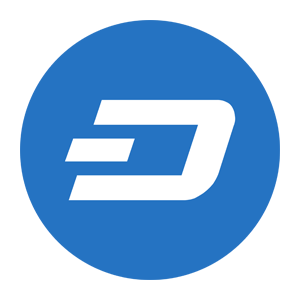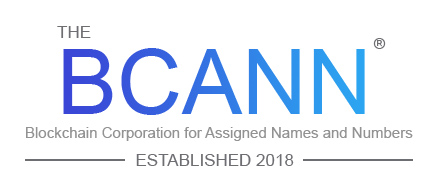
Dash is an open-source blockchain and cryptocurrency focused on offering a fast, cheap global payments network that is decentralized in nature. According to the project's white paper, Dash seeks to improve upon Bitcoin (BTC) by providing stronger privacy and faster transactions.
Dash, whose name comes from "digital cash," was launched in January 2014 as a fork of Litecoin (LTC). Since going live, Dash has grown to include features such as a two-tier network with incentivized nodes, including "masternodes," and decentralized project governance; InstantSend, which allows for instantly settled payments; ChainLocks, which makes the Dash blockchain instantly immutable; and PrivateSend, which offers additional optional privacy for transactions.
Who Are the Founders of Dash?
Dash was founded by software developers Evan Duffield and Kyle Hagan. The project was originally called XCoin, changing its name to Darkcoin two weeks later before rebranding again to Dash in March 2015 in an effort to positively change its image.
Before launching Dash, Duffield was a software developer with experience in finance, from his time working at Hawk Financial Group, as well as in public relations, having developed machine learning algorithms and search engines. He first conceived of Dash in 2012 as a way to add more anonymity to Bitcoin — hence, originally calling it Darkcoin. Duffield has claimed that he started it as a hobby, coding it in just one weekend. Duffield served as CEO of Dash Core Group — the company that supports the continued development, integrations and other activities of Dash — until December 2017 when he stepped down to focus on other strategic initiatives.
Hagan co-authored the original Darkcoin whitepaper alongside Duffield. However, he left the project early on in December 2014.
What Makes Dash Unique?
According to its website, the goal of Dash is "to be the most user-friendly and scalable payments-focused cryptocurrency in the world." To accomplish this, the project relies on a network of masternodes, which are servers backed by collateral held in Dash that are designed to provide advanced services securely and governance over Dash's proposal system. In exchange for part of the block rewards, masternodes provide a second layer of services to the network. They facilitate functions such as InstantSend, PrivateSend and ChainLocks.
Dash is marketed to both individual users and institutions, including merchants, financial services, traders and those who need to send international remittances. In October 2020, Dash Core Group reported that its strategic objectives moving forward include building its ecosystem and brand, ensuring that users are satisfied and further advancing the technology behind the network.
Dash's governance system, or treasury, distributes 10% of the block rewards for the development of the project in a competitive and decentralized way. This has allowed the creation of many funded organizations, including Dash Core Group. In addition, the Dash Foundation, which advocates for the adoption of the cryptocurrency, receives donations and offers paid individual and institutional memberships.
Related Pages:
Learn more about Litecoin, the cryptocurrency from which Dash was forked.
Learn about XRP, another cryptocurrency offering a near-instant payments network
Want tips on keeping your Dash safe? Read an in-depth crypto safety guide on Alexandria, CoinMarketCap's online educational resource.
Stay up to date on the latest cryptocurrency news with the CoinMarketCap Blog.
How Many Dash (DASH) Coins Are There in Circulation?
The maximum number of Dash tokens that can be issued is 18,921,005. However, this figure ultimately depends on how the governance decides to allocate the 10% of block rewards reserved for budget proposals. If none were ever allocated, only 17,742,696 DASH would ever be emitted. New Dash tokens are created through a proof-of-work mining algorithm in which the token emission rate is decreased by one-fourteenth, or approximately 7%, every 210,240 blocks, or about every 383 days.
Approximately 45% of new DASH is awarded to miners, 45% to masternodes and 10% to fund future proposals. In August 2020, a proposal was approved that will, once in effect, change the ratio of coins awarded to miners and masternodes from 50/50 to 40/60, respectively.
Within the first 48 hours of Dash's launch, approximately 2 million coins were mined, which significantly exceeded the planned emission schedule. Dash was originally forked from Litecoin, which suffered a similar issue at its launch due to a bug in its difficulty adjustment algorithm. While it is well-documented that Dash inherited the bug from Litecoin, there has, nonetheless, been widespread speculation about whether the resulting fastmine was intentional to benefit early miners.
How Is the Dash Network Secured?
Dash uses a two-tier network to secure its transactions. The first tier consists of nodes that carry out mining operations under a proof-of-work consensus protocol, meaning that they compete to solve complex cryptographic problems and at least 51% of nodes must approve a transaction for it to be added to the blockchain.
The PoW algorithm used by Dash is called "X11" — a custom hashing algorithm developed by Dash founder Duffield that uses a sequence of 11 hashing algorithms. According to Dash's documentation, X11 is "one of the safest and more sophisticated cryptographic hashes in use by modern cryptocurrencies."
The second tier consists of masternodes operating under a proof-of-service consensus algorithm in which masternodes are rated based on their history of providing good services to the network. Masternodes oversee the network and have the power to reject new blocks added by nodes if they were approved improperly. They also enable Dash's ChainLocks feature, which increases security because every 12 hours, a rotating group of masternodes observe and confirm all new blocks added to the blockchain. Dash's developers have stated that this protects the network against 51% attacks.
Where Can You Buy Dash (DASH)?
As one of the more popular altcoins, Dash can be purchased on most major cryptocurrency exchanges, including Binance, Coinbase Pro, Huobi Global, Kraken and OKEx. It can be traded against fiat currencies, cryptocurrencies such as Bitcoin and Ether (ETH), and stablecoins such as Tether (USDT) and USD Coin (USDC). It can be bought and sold on both spot and derivatives markets.


